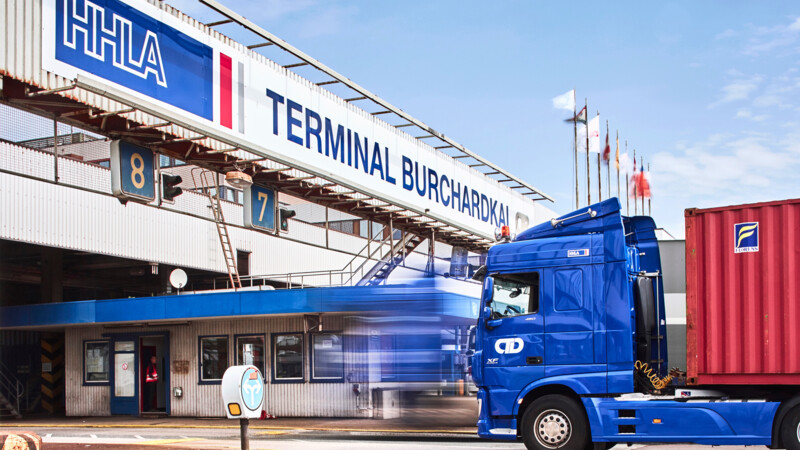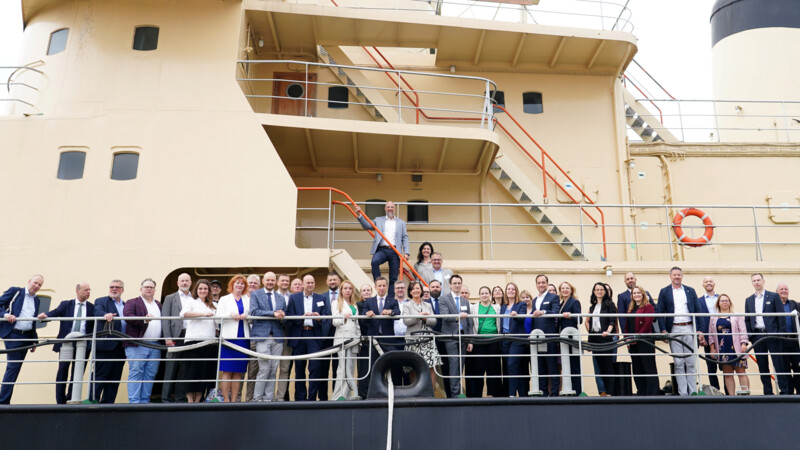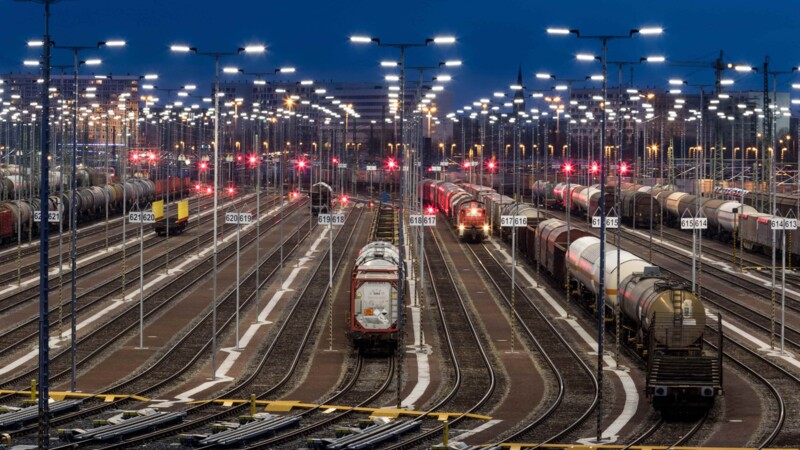This 5G mobile communications standard, which is crucial for digitalisation, should be a reliable tool. Data can be transmitted in real time - and every minute counts in the Port of Lübeck, where cargo sometimes has to be unloaded or loaded onto a ship in just two hours. "Cargo" can mean anything from cars to truck trailers, new and used vehicles and products such as cardboard, paper and pulp. Everything has to be in the right place at the right time: "Our long-term goal is a digital twin that provides all the information in real time. It is about knowing what is where and how to get it to the right place at the right time," said Siemensen.
The Port of Lübeck is a key piece of infrastructure in the Hamburg Metropolitan Region and far beyond. In 2022, around 25.6 million tonnes of seaborne goods were handled on Lübeck's quays. Most ferries and cargo ships set sail for Sweden and Finland or arrive from the region. Ports in Estonia, Latvia and Lithuania are also important destinations. Efficiency is a big issue in Lübeck: "We want to make better use of our space and get more out of it. That makes economic and ecological sense. The aim should be to use the space fully before sealing new areas," said Michael Siemensen, who is responsible for strategic port development at the Lübeck Port Authority.
Enabling real-time decisions with 5G
EVE42 robot scanning trailers autonomously
Procedures are now being digitised and networked as exemplified by the EVE42 robot, which keeps a permanent inventory. Around 1,600 spaces are available for unaccompanied truck trailers at Skandinavienkai. However, the hauliers do not park the trailers in allocated individual spaces, but in rows of 40 to 60 spaces: "The truck drivers usually bring one trailer and often take another with them. As things sometimes have to move quickly, a trailer may not always be parked in a predetermined row of blocks, but next to one that has to be picked up," Siemensen pointed out.

More overview - less searching
A search begins before freight is loaded onto a ship. The EVE42 robot scans rows in the quay autonomouslyand updates the booking system i.e., and which trailer is where. The front of the trailer and even handwritten identifiers are being read successfully. Problems arise with autonomous driving, and are now being addressed with the University of Lübeck. Professor Georg Schildbach from the university's Autonomous Systems Lab said: "I assume that we will be able to achieve the goal of autonomous driving in the port within six months."
Rapid automated processes
The robot is just one of many projects underway in the Port of Lübeck. Trailers will soon be arriving by both lorry and train. Digital systems will automatically identify trailers. Which trailer is coming? Is it time-critical and where is the best place to park it? Traffic management is another example. Trucks can be automatically detected on entering the port and the data compared to quay usage. If a lorry arrives too early, it can be automatically diverted to another area until more space is available. This digitisation strategy should lead to rapid, automated processes.
Co-operating with scientists
The Port of Lübeck brings scientists on board for individual projects, including the University of Lübeck. The Port of Lübeck is also investigating possible sources of funding. However, it is difficult to say when the port will go fully digital, said Siemensen. it is easier for software and machines to take over in a pure container port like Hamburg. Yet, the mix of cargo and the time factor make the Port of Lübeck special. Trailers are loaded onto the ship by tractor units, while ferry passengers drive their cars themselves. Ideally, loading and unloading occurs simultaneously. For safety reasons, fully automated loading and unloading by machine requires large time buffers. Siemensen remarked: "We still need people, given the level of precision and speed required."
agu/kk/pb
Sources and further information
More
Similar articles

HHLA launches new app in bid for more digitalisation

Germany and Latvia forge closer ties

Future Hamburg Talks meets Moritz Rath, CTO of Apprisify
